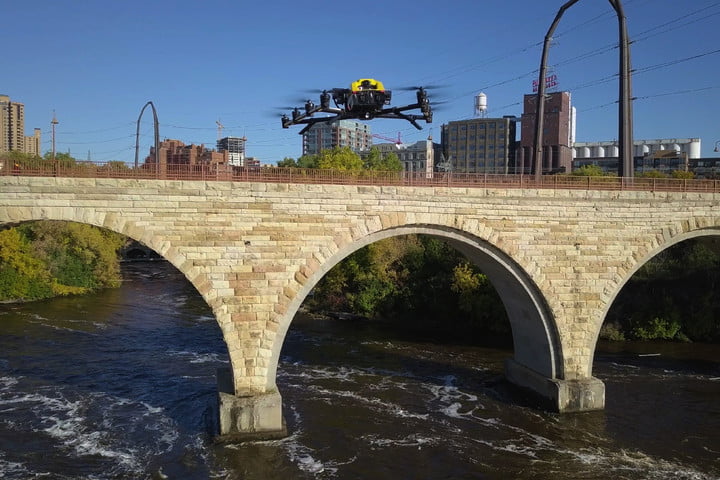Intel Wants its Fleet of Drones to Monitor America’s Aging, Unsafe Bridges
Plenty of people are excited about laying down new high-tech infrastructure to create smart cities. But can cutting-edge technology also be used to keep tabs on existing infrastructure, such as bridges? Intel certainly believes so — and it recently signed a deal with the Minnesota Department of Transportation and Kentucky Transportation Cabinet to prove it. The collaboration will see Intel’s cutting-edge drone technology used to carry out inspections of bridges in the regions.
Since even minor issues such as lane closures on these bridges result in major, costly delays, the hope is that drones will be useful in spotting potential problems before they become serious.
“What people may not know is that majority of U.S. bridges are more than 50 years old, and 10 percent of them are rated structurally deficient or obsolete,” Anil Nanduri, vice president and general manager of the Intel drone team, told Digital Trends. “The process of bridge inspections is a highly manual process and can be dangerous. What we did with the drone technology is supplement that process to save cost, time, and improve accuracy and reliable data.”

Intel’s Falcon 8+ drones are programmed to fly specific, repeatable flight paths necessary to capture all the required data. While it does this, each drone takes thousands of high-res images. These images can then be viewed as three-dimensional data. Over time, engineers and bridge inspectors can analyze changes, which can then be used for prediction purposes.
At present, Intel is using its technology to inspect the Daniel Carter Beard Bridge, connecting Ohio and Kentucky, and the Stone Arch Bridge in Minnesota. Currently, the drone usage is just part of the manual inspection process and requires drone operators on site to carry out the work. However, Intel believes this will change over time. Long term, the ambition is for drones to be able to carry out more of this work autonomously.
“For this to happen, drones will need to have a level of autonomy and intelligence and advanced flight safety technology built-in so that bridge inspection operations can be executed independently and without the need of a trained commercial drone pilot on site,” Nanduri said.
As impressive as Intel’s work is, it’s not the only example of drones or robotics being used to inspect infrastructure. A four-wheeled robot created by researchers at the University of Nevada is also designed for spotting bridge defects. Meanwhile, the so-called “LineRanger” robot is designed to inspect power lines for potential faults.




